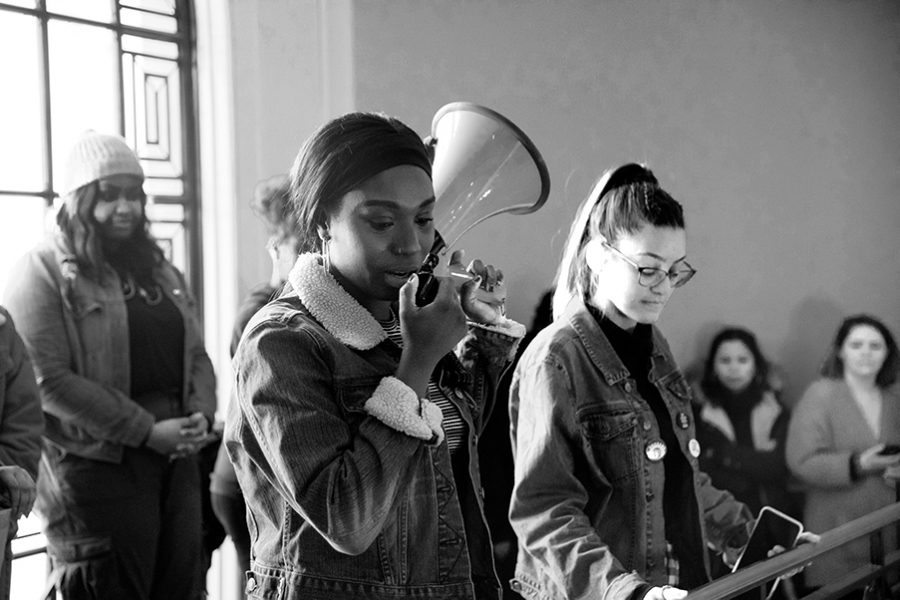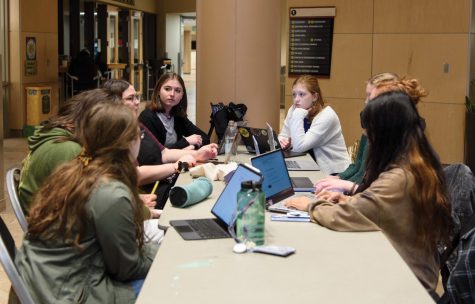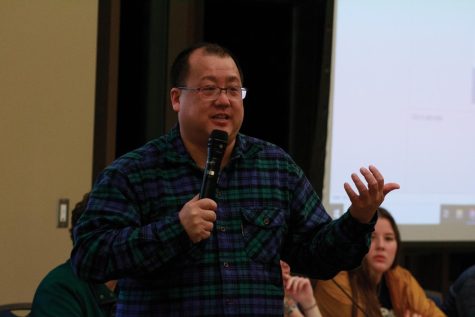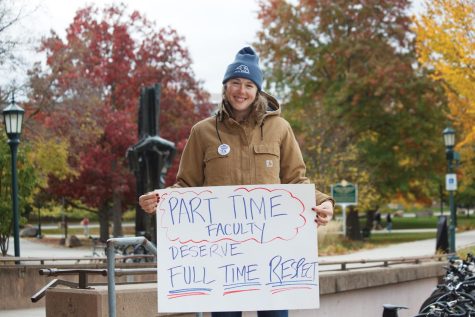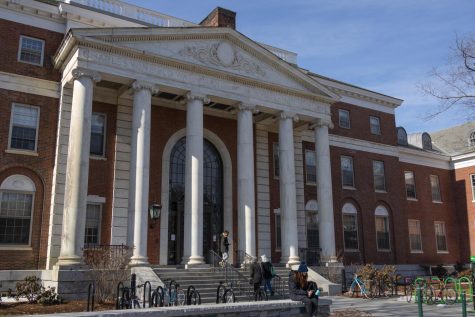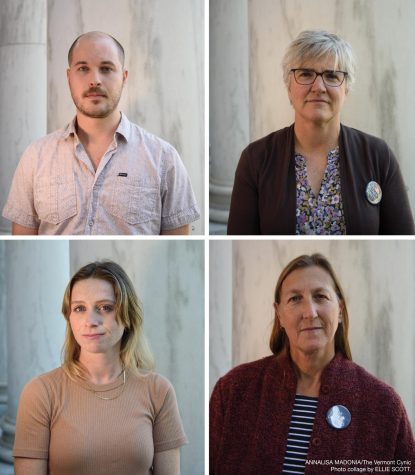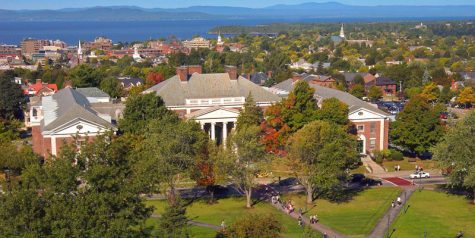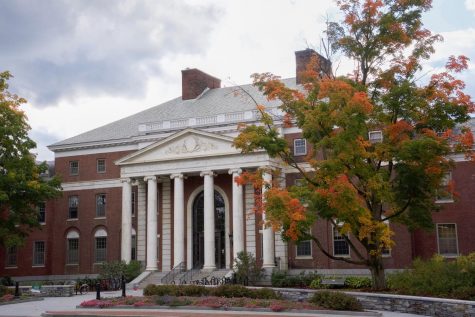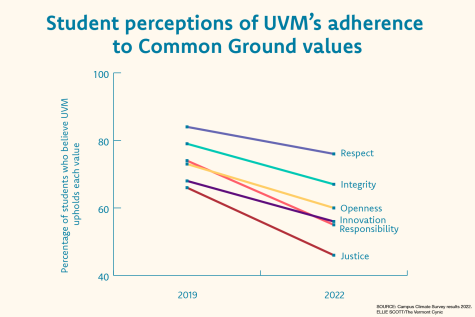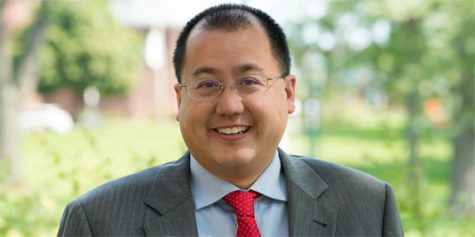NoNames changes persist a year later
Sophomore Harmony Edosomwan, a leader of the student group NoNames for Justice, speaks to the crowd alongside junior Amanda Martinez Feb. 26. The rally commemorated the one-year the one-year anniversary of the group’s Waterman takeover.
March 7, 2019
One year after the 2018 Waterman Takeover, NoNames for Justice rallied in the Waterman Building to celebrate its accomplishments and promote other student activist groups on campus.
NoNames held several rallies in February 2018, including shutting down Main Street Feb. 22 and taking over Waterman for 10 hours Feb. 26 to protest racially charged incidents on campus.
Their demands included removing former President Guy Bailey’s name from the library due to his involvement in the eugenics movement, increased retention of students, staff and faculty of color and the reviewing and revamping of diversity curriculum, among other demands.
NoNames organizer Amanda Martinez, a junior, came up with the idea for the anniversary rally.
She said she has seen the implementation of some of the demands, including the library’s name change in October 2018 and increased campus awareness of racial issues.
“I have seen other organizations come together to try to make change and just students being more aware of what’s going on on campus,” she said.
Martinez said the administration is not transparent enough about its progress on other demands.
“Nobody had reached out to us to be in these meetings, except the ones we did before the school year ended last year,” she said.
On UVM’s website there is a page entitled “Diversity & Inclusion Update: Spring 2019” that compiles UVM’s progress on NoNames’ demands, said Jim Vigoreaux, associate provost for faculty affairs.
Some of the progress listed on the page includes increased opportunities for diversity training for faculty, staff and students, increased avenues of funding for diversity centers and increasing the bias response program’s response speed, among other things.
As far as retention of faculty of color, it is too soon to tell if UVM has made progress since you need to look at trends over time to get an accurate gauge, Vigoreaux said.
UVM employs several strategies to hire faculty of color, such as forming relationships with historically black universities.
But, it is a long term process to build those relationships and recruit their graduates, he said.
While recruitment varies from field to field, UVM has had success in its efforts and its percentage of faculty of color has remained relatively stable over time, Vigoreaux said.
Bev Colston, director of the Mosaic Center for Students of Color, said the library’s name change is one of the biggest takeaways from the protests.
Since the 2018 protests, the MCSC has gotten two counselors specifically for the identity center, who each work there two days a week, Colston said.
“The activism has really moved our institution to think about what kind of community we want to be,” she said.
The provost’s office started a diversity fellowship, which is headed by Pablo Bose, director of global studies, said Deb Noel, English lecturer and diversity fellow.
“Everyone was happy that it was an initiative the upper levels of the administration were willing to support,” Noel said.
Since signing a memorandum of understanding last year, SGA has increased funding to the Diversity Enhancement Fund.
The fund provides money to diversity-focused groups and events, SGA President Ethan Foley, a junior, said.
In the future, Martinez would like to see more progress on the demands, a more diverse SGA and student voices being listened to more closely on campus, she said.


